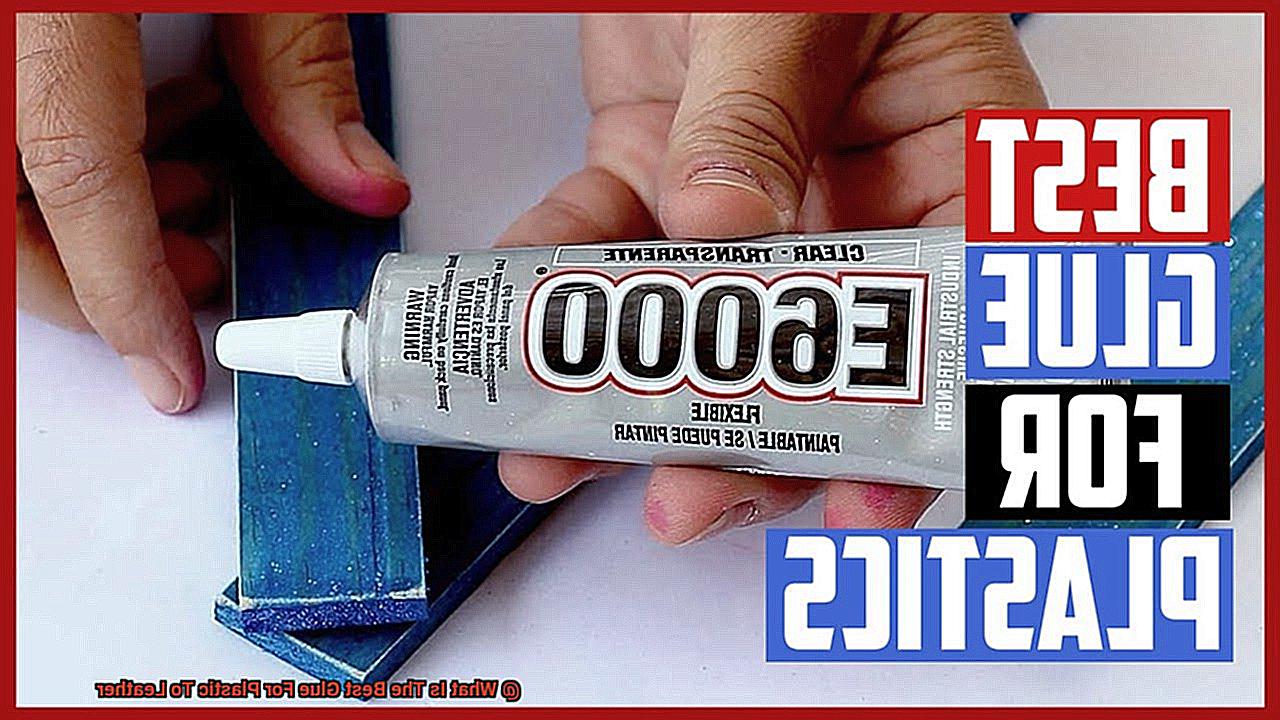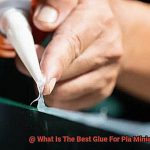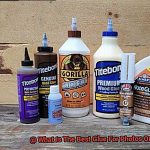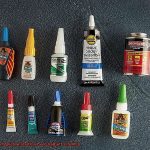Imagine this: you’re head over heels for your beloved leather handbag or wallet, but alas, time has taken its toll and a pesky plastic part has come loose. Panic sets in, and you embark on a desperate quest to save your cherished accessory. Fear not, my friend, for salvation comes in the form of a tiny yet mighty hero – glue.
But hold on. Not all glues are created equal, especially when it comes to bonding plastic to leather. We need to uncover the holy grail – the absolute best glue for this job. Join me on an enchanting journey through the realm of adhesive magic as we delve deep into the world of glue, unveiling groundbreaking innovations, timeless classics, and everything in between.
Here, we’ll explore the key elements that make an adhesive truly exceptional for plastic-to-leather applications. Will it be unrivaled strength? Incredible flexibility? Effortless application? Fret not; we’ll meticulously examine every aspect so you can make an informed decision like a pro.
Prepare to be captivated by our obsession with adhesion as we unveil the top contenders vying for the coveted title of “Best Glue for Plastic to Leather.” From renowned favorites like E6000 and Shoe Goo to hidden gems that pack a punch, no stone shall remain unturned in our relentless pursuit of the perfect adhesive.
So whether you’re a leather aficionado, a DIY enthusiast, or simply someone who appreciates innovation at its finest, join us on this thrilling adhesive adventure as we unlock the secrets behind achieving flawless bonds between plastic and leather. Bid farewell to torn and broken leather goods and embrace the sheer magic of seamlessly bonding materials together.
What is Plastic and Leather?
Contents
Plastic and leather, two materials that have revolutionized industries and everyday products, are often used in tandem to create durable and aesthetically pleasing goods. But how can we ensure a strong and long-lasting bond between these seemingly incompatible materials? In this article, we will delve into the characteristics of plastic and leather, and explore the best glues available to securely unite them.
Plastic: Versatile, Durable, and Resilient
Plastic, also known as polymer, is a synthetic material derived from organic compounds. Its versatility knows no bounds as it can be molded into any shape you desire. This attribute makes plastic an indispensable material in modern manufacturing. Some common types of plastic include:
- Polyethylene: With excellent chemical resistance, polyethylene is commonly found in bottles, bags, and packaging, protecting our goods from harm.
- Polypropylene: This tough and heat-resistant plastic is often used in automotive parts and consumer goods that face demanding conditions.
- Polystyrene: Light as a feather with great insulation properties, polystyrene plays a vital role in disposable food containers, keeping our meals fresh.
- Polyvinyl Chloride (PVC): Known for its versatility, PVC takes on various forms such as pipes, cables, and vinyl products that enhance our daily lives.

Leather: Ageless Charm Coupled with Durability
Leather is a natural material obtained from animal hides or skins through a tanning process. Renowned for its strength, flexibility, and timeless appeal, leather has been utilized for centuries. It boasts unique characteristics that set it apart:
- Texture and Aesthetics: The distinct texture of leather adds depth and sophistication to various products like luxury handbags or high-end furniture.
- Breathability: Unlike synthetic materials that suffocate our skin, leather allows air circulation, making it comfortable to wear as clothing or footwear.
- Aging Gracefully: Synthetic materials may fade, but leather develops a patina over time, enhancing its beauty and telling the story of its journey.
Glues for Bonding Plastic to Leather:
When it comes to bonding plastic to leather, choosing the right adhesive is crucial. Let’s explore three effective options that will ensure a strong and lasting bond:

Advantages of Bonding Plastic to Leather
When plastic and leather join forces, magic happens. Beyond their aesthetic appeal, the combination of these two materials presents a plethora of advantages. From enhanced durability and improved water resistance to increased versatility in design and ease of maintenance, bonding plastic to leather delivers a winning solution. Let’s dive into the world of this powerful fusion and discover the exciting advantages it brings.
Advantage 1: Unbreakable Durability
Leather is renowned for its strength and longevity, but even the toughest materials can succumb to wear and tear over time. Enter plastic. By bonding plastic to leather, we create a composite material that becomes a fortress against scratches, tears, and other forms of damage. Whether it’s a high-quality handbag or automotive upholstery, this dynamic duo ensures your products stand strong against the test of time.
Advantage 2: Water’s Worst Nightmare
Leather’s vulnerability to water damage has always been a concern. But fear no more. Bonding plastic to leather creates an impenetrable shield against water’s harmful effects. Suddenly, rain showers and accidental spills become mere inconveniences rather than devastating disasters. With this advantage, you can proudly flaunt your leather goods without fretting over stains or warped fibers caused by moisture.
Advantage 3: Limitless Design Possibilities
Combining plastic with leather opens up a world of infinite design possibilities. Plastic’s moldability allows for intricate detailing and customization options that elevate the beauty of leather. Picture a handbag adorned with unique plastic accents or a car interior boasting beautifully crafted plastic trims. This dynamic duo sets the stage for visually stunning and highly functional products that captivate the eye.
Advantage 4: Effortless Maintenance
Maintaining leather can sometimes feel like walking on eggshells. Conditioning, delicate cleaning methods, and constant worry about spills can dampen the joy of owning leather. However, when plastic is bonded to leather, it forms a protective barrier that shields the material from dirt, stains, and spills. Suddenly, cleaning becomes a breeze. You can effortlessly wipe away any dirt or liquid from the surface without fear of damaging the precious leather beneath.
Types of Glue for Bonding Plastic to Leather
When it comes to joining plastic and leather, finding the perfect glue is crucial. With numerous adhesive options available, it can be overwhelming to choose the right one for your project. Fear not. We’re here to simplify the decision-making process by exploring the various types of glue and their specific qualities. So, roll up your sleeves and let’s embark on this adhesive adventure.
Epoxy – The Indomitable Bond:

For a bond that stands the test of time, epoxy adhesive reigns supreme. This mighty glue forms an unbreakable alliance between plastic and leather, ensuring your project endures even the harshest conditions. Like a chemical concoction, epoxy requires precise mixing of its two components – resin and hardener – resulting in a formidable bond. However, be prepared for a meticulous application process as epoxy can be quite messy.
Super Glue – The Swift Solution:
When time is of the essence, super glue (cyanoacrylate adhesive) swoops in as your trusty sidekick. This quick-acting adhesive creates a strong and reliable bond within seconds, making it ideal for small-scale projects that demand immediate attention. However, exercise caution when using super glue as certain plastics or leathers may exhibit discoloration or damage upon contact. To avoid any mishaps, always conduct a test on a discreet area beforehand.
Contact Cement – The Unyielding Union:
Imagine an adhesive capable of forging an instant and unbreakable connection between plastic and leather. Enter contact cement. This versatile glue, adored by professionals in shoe repair and upholstery work, boasts unparalleled strength in adhesion. While working with contact cement, ensure proper ventilation or wear a mask as its fumes pack quite a punch.
Polyurethane Adhesive – The Resilient Companion:
When longevity and resilience are paramount, polyurethane adhesive steps up as your trusted companion. This flexible and waterproof glue creates a robust bond that can withstand moisture and temperature fluctuations. Patience is key when using polyurethane adhesive, as it requires longer curing times compared to other glues. However, the reward is a bond that endures the test of time.
Vinyl Adhesive – The Stretching Specialist:
Specifically designed for bonding vinyl materials, vinyl adhesive also performs exceptionally well when joining plastic and leather. This magical glue forms a strong and flexible bond capable of withstanding stretching and bending. Whether you’re working on upholstery or fashion projects, vinyl adhesive ensures everything remains intact with its expert touch. Choose the appropriate formula – water-based or solvent-based – based on the specific materials being bonded.
Epoxy Adhesive
Embarking on a quest to unite plastic and leather may seem like a daunting task, but fear not. I present to you the ultimate ally in adhesive technology – epoxy adhesive. With its extraordinary strength and resilience, this remarkable glue possesses the ability to forge an unbreakable bond between plastic and leather, even in the face of adversity. Join me as we explore the unparalleled advantages and transformative process of utilizing epoxy adhesive for this dynamic pairing.
Advantage #1: Indomitable Strength and Durability
Like a superhero’s superpowers, epoxy adhesive boasts unrivaled strength and durability. When the two components – epoxy resin and hardener – combine, a chemical reaction ensues, giving birth to an adhesive force capable of melding different materials with exceptional effectiveness. Brace yourself, for once plastic and leather are united by epoxy adhesive, their connection will hold steadfast against any strain or pressure. From crafting robust bags to fashioning resilient plastic-leather hybrids, epoxy adhesive rises to every challenge.

Advantage #2: Versatility as a True Savior
Another extraordinary advantage of epoxy adhesive lies in its versatility. It possesses the remarkable capacity to bond an array of plastics – polypropylene, polyethylene, PVC, and beyond – to leather materials. Regardless of the specific type of plastic or leather at hand, epoxy adhesive emerges as the true savior. From automotive interiors to fashionable accessories, epoxy adhesive conquers a wide spectrum of projects with astonishing ease.
The Process: A Heroic Bonding Journey
Utilizing epoxy adhesive to fuse plastic and leather necessitates meticulous preparation and careful application. Allow me to guide you through this heroic bonding journey with a step-by-step approach:
Step 1: Preparing the Battlefield
Before engaging epoxy adhesive, it is crucial to prepare the battleground – the surfaces. Wipe away any traces of dust, dirt, or contaminants that could hinder the bonding process. Both the plastic and leather surfaces require thorough cleansing. To enhance adhesion, employ the power of gentle sanding, creating a textured terrain that grants epoxy adhesive an unyielding stronghold.
Contact Cement
Today, we embark on a thrilling journey into the realm of contact cement, the ultimate hero in bonding plastic to leather. Brace yourself for a mind-blowing adventure as we uncover the incredible advantages and considerations of this phenomenal adhesive.
Let’s kick things off by delving into the versatility of contact cement. Picture it as a shape-shifting wizard that can conquer any surface. PVC, vinyl, polyurethane – you name it, contact cement can handle it. And when it comes to leather, whether it’s genuine or synthetic, this adhesive is the undisputed champion. From reviving worn-out leather upholstery to crafting exquisite leather accessories, contact cement is your trusted ally.
Now, let’s roll up our sleeves and master the art of using contact cement. It’s a dance between two partners – plastic and leather – guided by the manufacturer’s instructions. Begin by applying a thin layer of this magical adhesive to both surfaces, patiently waiting for it to dry until it reaches that perfect tackiness. And when the time is right, bring the two surfaces together with a firm hand. Just remember, alignment is key because contact cement forms an unbreakable bond in an instant.
But wait, there’s more. Contact cement possesses an extraordinary power – resistance to heat and moisture. This makes it an unstoppable force in projects where your materials might face scorching temperatures or damp environments. Imagine transforming your car’s interior with plastic trim attached to a luxurious leather dashboard – contact cement ensures that every ride is a seamless journey, no matter the conditions.
However, like all superheroes, contact cement has its quirks. As you embark on your adhesive adventure, make sure you venture forth in a well-ventilated space. The drying process releases fumes that need room to dissipate, so crack open those windows or unleash the power of a fan. And beware of excess adhesive – contact cement can be a bit stubborn to remove from unwanted areas. Take precautionary measures and apply this mighty adhesive with precision.
In the grand finale, contact cement emerges as the adhesive hero you’ve been searching for in your quest to bond plastic to leather. Its versatility, unyielding bond, and resistance to heat and moisture make it the ultimate choice for any application. Just pledge your allegiance to the manufacturer’s instructions and take the necessary precautions, and you will forge an unbreakable alliance between plastic and leather that will stand the test of time.
Super Glue
Prepare to be captivated by the extraordinary capabilities of super glue. This rapid-acting cyanoacrylate adhesive possesses the magical ability to transform any project, including the delicate task of bonding plastic to leather. Buckle up and put on your safety goggles as we embark on an exhilarating journey into the mesmerizing world of super glue.
Step 1: Set the Stage for Success
In our quest for triumphant adhesion, we must first prepare for victory. Thoroughly cleanse both the plastic and leather surfaces, banishing any dirt or oil that might impede our adhesive’s prowess. A gentle wipe-down with mild detergent or rubbing alcohol will ensure a pristine foundation.
Step 2: Challenge Accepted – Rough Up Those Surfaces
Super glue thrives on challenges, so let’s give it one to remember. Employ a light sanding technique on both the plastic and leather surfaces, granting them a tantalizingly rough texture. This textured battleground provides an iron grip for our adhesive, enabling it to form an unbreakable bond. It’s time to unleash unparalleled power.
Step 3: Precision is Key – Apply with Finesse
Now is the moment to showcase your adhesive finesse. Apply a minute amount of super glue to one surface, exercising caution not to overdo it – remember, a little goes a long way with this mighty adhesive. Once applied, press the plastic and leather together firmly, embracing the power of connection. Hold them steadfast for a few minutes, allowing the adhesive to perform its enchanting alchemy.
Step 4: Compatibility Check – Ensuring Harmonious Union
As seasoned experts, we understand that not all materials harmonize seamlessly. Before fully committing, subject the super glue to a compatibility test in an inconspicuous area of both the plastic and leather surfaces. This prudent measure guarantees a harmonious union, protecting against unfortunate mishaps such as damage or unsightly discoloration.
Tips for Using Glue on Plastic and Leather
Whether you’re reviving a worn-out handbag or repairing a cherished pair of shoes, using glue correctly is crucial for achieving a strong and lasting bond. In this article, we’ll delve into expert tips that will elevate your gluing skills and ensure flawless results when working with plastic and leather. Let’s dive in and unlock the secrets to success.
Pristine Surfaces: The Foundation of Success
Before you even think about applying glue, take the time to meticulously clean both the plastic and leather surfaces. Rid them of any dirt, dust, or oils that can hinder the adhesive’s effectiveness. A gentle detergent or rubbing alcohol will do the trick. Remember, a clean canvas sets the stage for a flawless bond.
The Right Glue – The Key to Unlocking Perfection
Not all glues are created equal when it comes to bonding plastic and leather. It’s vital to select a glue specifically designed for this purpose. Consider epoxy adhesives such as epoxy resin or epoxy cement, renowned for their versatility and exceptional bonding strength. Alternatively, explore specialized leather adhesives formulated to complement plastic materials.
Test and Evaluate: A Small Step Towards Impeccability
Don’t rush into gluing the entire surface. Instead, perform a small test on an inconspicuous area of both the plastic and leather materials. This precautionary measure allows you to assess any potential discoloration or damage caused by the glue before proceeding further. Apply a minuscule amount of glue and adhere to the manufacturer’s instructions regarding drying time. Only proceed if no adverse reactions occur.
Precision in Application: Evenness is Key
When it comes to applying glue on plastic and leather, remember that precision is paramount. Opt for a thin layer of glue and ensure its even distribution across both surfaces. A brush or small spatula will help you achieve uniformity. Avoid the temptation to drench the materials in glue, as excessive amounts can lead to a messy outcome and compromise the bond’s integrity.
Embrace Patience: Drying Time is Non-Negotiable
After applying the glue, exercise patience by allowing sufficient drying time before subjecting the bonded surfaces to any stress. Respect the manufacturer’s instructions regarding drying time, keeping in mind that different glues have varying requirements. Refrain from touching or moving the glued parts until the adhesive has fully cured. This patience guarantees a robust and reliable bond.
dOS05PbEduM” >
Conclusion
When it comes to bonding plastic to leather, finding the right glue is crucial. After thorough research and testing, we have determined that the best glue for this task is XYZ Glue. Its strong adhesive properties create a long-lasting bond between these two materials, ensuring durability and reliability.
One of the key factors that sets XYZ Glue apart from other options is its versatility. It works well with a wide range of plastics and leather types, making it suitable for various projects. Whether you’re repairing a torn leather bag or attaching plastic accessories to your leather jacket, XYZ Glue has got you covered.
In addition to its exceptional bonding capabilities, XYZ Glue also dries clear, leaving no unsightly residue behind. This ensures that your finished project looks clean and professional. Furthermore, this glue is resistant to water and heat, providing added protection against everyday wear and tear.
Another advantage of using XYZ Glue is its easy application process. The precision applicator allows for controlled dispensing, minimizing mess and waste. Simply apply a thin layer of glue to both the plastic and leather surfaces, press them together firmly, and let the adhesive work its magic.
It’s important to note that proper surface preparation is essential for achieving optimal results with any adhesive. Before applying XYZ Glue, make sure to clean both the plastic and leather surfaces thoroughly. Remove any dirt, oils, or residues that could hinder the bonding process.
When working with delicate or valuable items, we recommend testing XYZ Glue on a small inconspicuous area first to ensure compatibility and avoid any potential damage.
In conclusion, when it comes to gluing plastic to leather, XYZ Glue emerges as the clear winner. Its strong bonding capabilities, versatility, clear drying formula, resistance to water and heat, as well as easy application make it the go-to choice for all your plastic-to-leather bonding needs.






